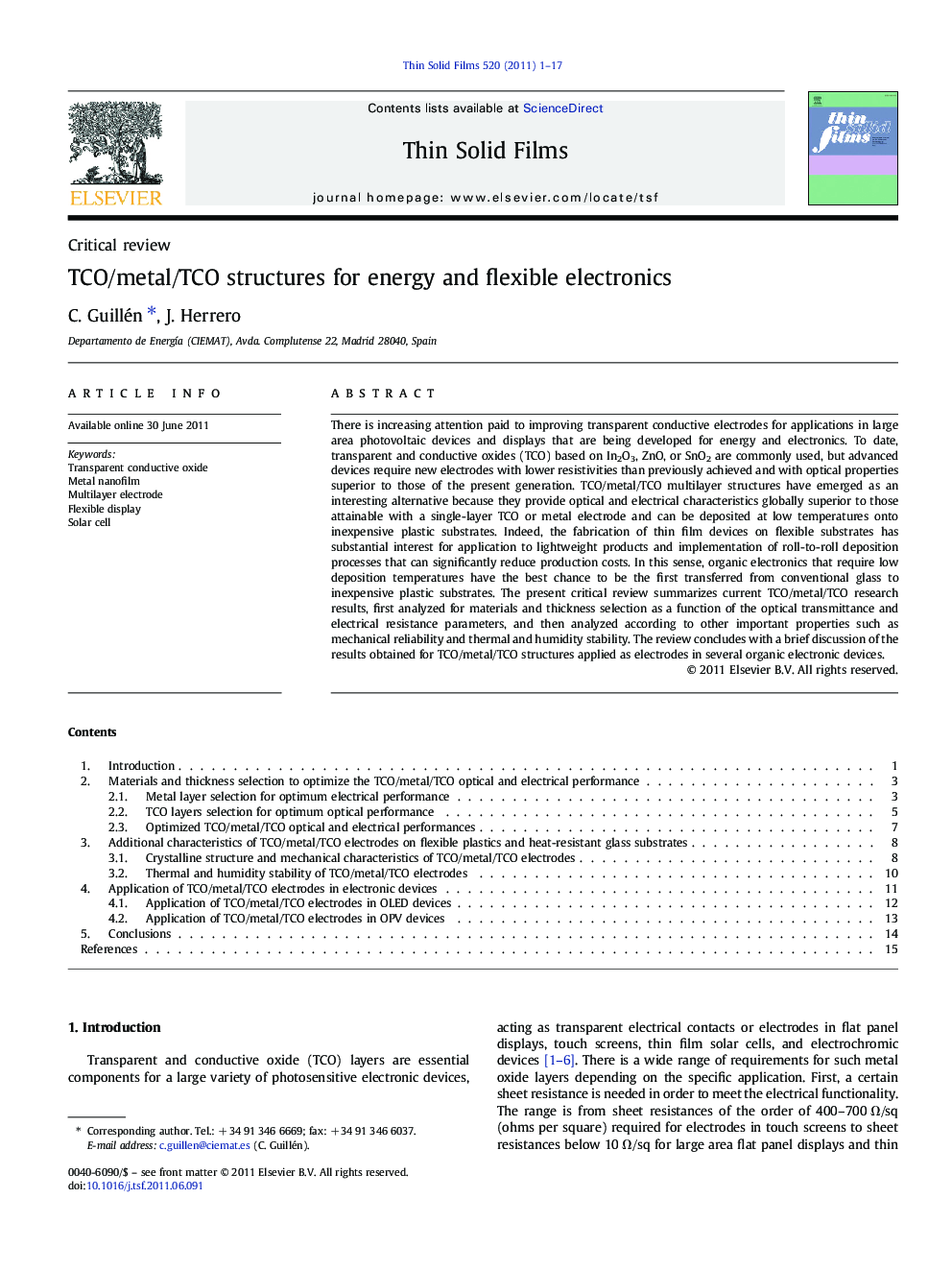| Article ID | Journal | Published Year | Pages | File Type |
|---|---|---|---|---|
| 1668386 | Thin Solid Films | 2011 | 17 Pages |
There is increasing attention paid to improving transparent conductive electrodes for applications in large area photovoltaic devices and displays that are being developed for energy and electronics. To date, transparent and conductive oxides (TCO) based on In2O3, ZnO, or SnO2 are commonly used, but advanced devices require new electrodes with lower resistivities than previously achieved and with optical properties superior to those of the present generation. TCO/metal/TCO multilayer structures have emerged as an interesting alternative because they provide optical and electrical characteristics globally superior to those attainable with a single-layer TCO or metal electrode and can be deposited at low temperatures onto inexpensive plastic substrates. Indeed, the fabrication of thin film devices on flexible substrates has substantial interest for application to lightweight products and implementation of roll-to-roll deposition processes that can significantly reduce production costs. In this sense, organic electronics that require low deposition temperatures have the best chance to be the first transferred from conventional glass to inexpensive plastic substrates. The present critical review summarizes current TCO/metal/TCO research results, first analyzed for materials and thickness selection as a function of the optical transmittance and electrical resistance parameters, and then analyzed according to other important properties such as mechanical reliability and thermal and humidity stability. The review concludes with a brief discussion of the results obtained for TCO/metal/TCO structures applied as electrodes in several organic electronic devices.
